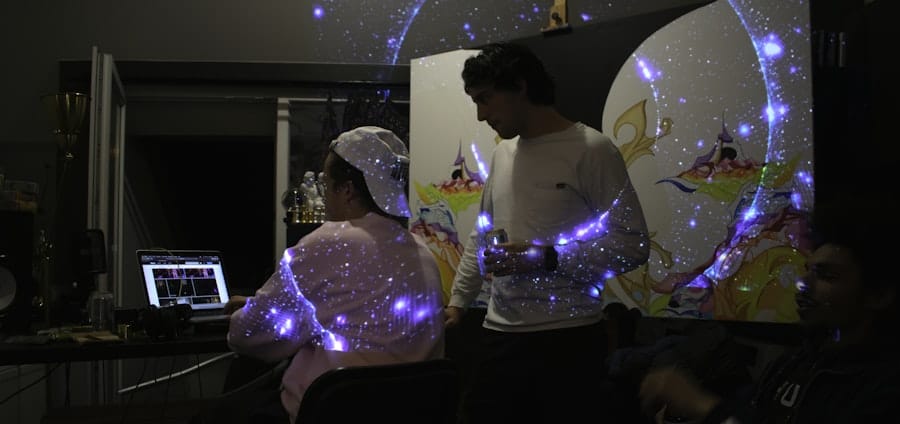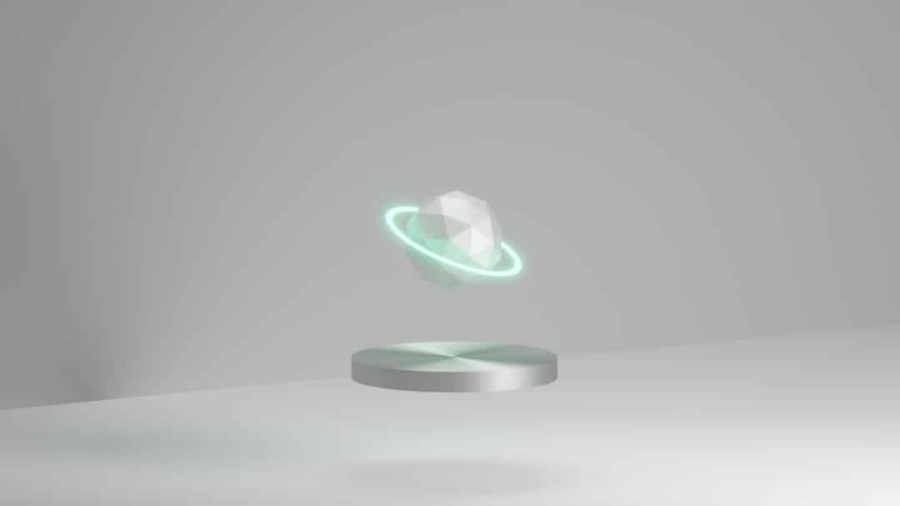Augmented Reality (AR) holograms represent a significant leap in the way we visualize and interact with digital content. Unlike traditional holography, which relies on light interference patterns to create three-dimensional images, AR holograms overlay digital information onto the real world, enhancing our perception of reality. This technology utilizes devices such as smartphones, tablets, and specialized AR glasses to project virtual objects that can be manipulated and interacted with in real-time.
The integration of AR holograms into various sectors, including education, entertainment, and marketing, has opened up new avenues for creativity and innovation. The evolution of AR technology has been rapid, driven by advancements in computer vision, graphics processing, and mobile computing. Companies like Microsoft with its HoloLens and Magic Leap have pioneered the development of AR hardware that allows users to experience immersive environments where digital elements coexist with the physical world.
As AR holograms become more accessible and affordable, their potential applications in live presentations are becoming increasingly apparent. This article delves into the transformative impact of AR holograms on live presentations, exploring their advantages, audience engagement capabilities, successful case studies, challenges faced, and future prospects.
Key Takeaways
- AR holograms are virtual objects or characters that appear in the real world through the use of augmented reality technology.
- AR holograms can revolutionize live presentations by adding a new dimension of interactivity and engagement.
- Using AR holograms in live presentations can provide advantages such as enhanced visual appeal, improved storytelling, and increased audience retention.
- AR holograms enhance audience engagement by creating immersive experiences, enabling interactive elements, and leaving a lasting impression on viewers.
- Successful case studies of AR hologram implementation in live presentations demonstrate the potential for increased audience engagement and brand impact.
The Impact of AR Holograms on Live Presentations
The introduction of AR holograms into live presentations has fundamentally altered the landscape of how information is conveyed to audiences. Traditional presentation methods often rely on static slides or videos that can fail to capture the audience’s attention. In contrast, AR holograms provide a dynamic and interactive experience that can significantly enhance the delivery of content.
By allowing presenters to project three-dimensional visuals that can be viewed from multiple angles, AR technology creates a more immersive environment that fosters better understanding and retention of information. Moreover, the use of AR holograms can bridge the gap between complex concepts and audience comprehension. For instance, in fields such as medicine or engineering, intricate processes can be visualized in a way that is both engaging and educational.
A surgeon might use AR to demonstrate a procedure by projecting a holographic model of human anatomy, allowing the audience to see the details in a way that traditional slides cannot achieve. This capability not only aids in clarity but also encourages active participation from the audience, as they can interact with the holographic elements being presented.
Advantages of Using AR Holograms in Live Presentations

One of the most significant advantages of using AR holograms in live presentations is their ability to create a memorable experience for the audience. The novelty of seeing three-dimensional images projected into real space captures attention and stimulates curiosity. This heightened engagement can lead to improved information retention, as audiences are more likely to remember experiences that evoke strong emotional responses.
The interactive nature of AR also allows for real-time feedback and adjustments during presentations, enabling presenters to tailor their delivery based on audience reactions. Additionally, AR holograms can facilitate collaboration among participants in a presentation setting. For example, in corporate environments where teams are spread across different locations, AR technology can enable remote participants to join in a shared experience.
By projecting holographic representations of data or products, teams can brainstorm and strategize together as if they were physically present in the same room. This collaborative aspect not only enhances communication but also fosters innovation by allowing diverse perspectives to converge in real-time.
How AR Holograms Enhance Audience Engagement
Engagement is a critical factor in the success of any presentation, and AR holograms excel at capturing and maintaining audience interest. The interactive features of AR technology allow audiences to become active participants rather than passive observers. For instance, during a product launch, attendees might be invited to manipulate a holographic model of the product, exploring its features from different angles or even simulating its functionality.
This hands-on approach not only makes the presentation more enjoyable but also deepens the audience’s understanding of the product. Furthermore, AR holograms can be tailored to suit different learning styles within an audience. Visual learners benefit from the striking imagery and spatial relationships presented by holograms, while kinesthetic learners engage through interaction with the digital elements.
By catering to various preferences, presenters can ensure that their message resonates with a broader audience. The ability to incorporate storytelling elements into AR presentations also enhances engagement; narratives can be woven around holographic visuals to create a compelling context that draws audiences into the experience.
Case Studies of Successful Implementation of AR Holograms in Live Presentations
Several organizations have successfully integrated AR holograms into their live presentations, showcasing the technology’s potential across various industries. One notable example is the automotive industry, where companies like Audi have utilized AR during product launches. At an event for the unveiling of a new model, Audi employed AR holograms to display intricate details of the car’s design and engineering features.
Attendees could view a life-sized holographic representation of the vehicle from multiple angles, allowing them to appreciate its aesthetics and functionality in a way that traditional presentations could not achieve. In the realm of education, institutions such as Stanford University have embraced AR technology for teaching complex subjects like anatomy. During live demonstrations, instructors use AR holograms to project detailed models of human organs and systems, enabling students to visualize and interact with structures that would otherwise be difficult to comprehend through textbooks alone.
This innovative approach not only enhances learning outcomes but also inspires students by providing them with a glimpse into real-world applications of their studies.
Challenges and Limitations of Using AR Holograms in Live Presentations

Despite their numerous advantages, the implementation of AR holograms in live presentations is not without challenges. One significant hurdle is the technical complexity involved in creating high-quality holographic content. Developing effective AR experiences requires specialized skills in 3D modeling, programming, and user interface design.
Organizations may face difficulties in finding or training personnel with these competencies, which can hinder their ability to produce compelling presentations. Additionally, there are logistical considerations related to hardware requirements and venue compatibility. Not all presentation spaces are equipped with the necessary technology to support AR experiences, which can limit where these presentations can take place.
Furthermore, presenters must ensure that their audience has access to compatible devices or equipment to fully engage with the content being presented. These challenges necessitate careful planning and investment in both technology and training to ensure successful implementation.
Tips for Creating Effective AR Hologram Presentations
Creating effective AR hologram presentations requires thoughtful planning and execution. One key tip is to focus on storytelling; rather than simply displaying information, presenters should craft a narrative that guides the audience through the experience. This approach helps contextualize the holographic visuals and makes them more relatable.
Incorporating elements such as character-driven stories or real-world scenarios can enhance emotional engagement and make complex concepts more accessible. Another important consideration is interactivity; presenters should design their AR experiences to encourage audience participation. This could involve allowing attendees to manipulate holographic objects or providing opportunities for them to ask questions about what they see.
Engaging the audience actively not only keeps their attention but also fosters a sense of ownership over the learning process.
The Future of AR Holograms in Live Presentations
The future of AR holograms in live presentations appears promising as technology continues to advance at an unprecedented pace. As hardware becomes more sophisticated and affordable, we can expect wider adoption across various sectors. Innovations such as improved gesture recognition and eye-tracking capabilities will further enhance interactivity and user experience, making it easier for presenters to engage their audiences effectively.
Moreover, as 5G networks become more prevalent globally, the potential for real-time data integration into AR presentations will expand significantly. Presenters will be able to pull live data feeds into their holographic displays, allowing for dynamic content updates during presentations. This capability could revolutionize fields such as finance or healthcare by providing audiences with up-to-the-minute information that enhances decision-making processes.
In conclusion, as organizations continue to explore the possibilities offered by AR holograms in live presentations, we are likely to witness an evolution in how information is shared and experienced. The combination of immersive visuals, interactivity, and real-time data integration will redefine audience engagement and set new standards for effective communication across industries.
In the rapidly evolving landscape of live presentations, augmented reality (AR) holograms are making a significant impact by offering immersive and interactive experiences. A related article that complements this topic is Best Software to Create Training Videos, which explores tools that can enhance the creation of engaging and educational content. Just as AR holograms are transforming live presentations, innovative software solutions are revolutionizing how training videos are produced, allowing for more dynamic and effective learning experiences. Both technologies highlight the importance of integrating cutting-edge tools to captivate and educate audiences in various settings.
FAQs
What are AR holograms?
AR holograms are virtual 3D objects or characters that are superimposed onto the real world using augmented reality technology. They appear to exist in the physical space and can be interacted with in real time.
How are AR holograms redefining live presentations?
AR holograms are redefining live presentations by allowing presenters to incorporate virtual elements into their presentations, creating a more engaging and immersive experience for the audience. This technology enables presenters to bring virtual objects, characters, and visual effects into the physical space, enhancing the impact and effectiveness of their presentations.
What are the benefits of using AR holograms in live presentations?
Some benefits of using AR holograms in live presentations include increased audience engagement, enhanced visual storytelling, the ability to demonstrate complex concepts in a more tangible way, and the potential to create memorable and impactful presentations that leave a lasting impression on the audience.
How do AR holograms work in live presentations?
AR holograms work in live presentations by using a combination of hardware and software to create and display virtual 3D objects or characters in the physical space. This typically involves the use of AR glasses or a smartphone/tablet with AR capabilities, along with specialized software for creating and displaying the holographic content.
What industries can benefit from using AR holograms in live presentations?
Various industries can benefit from using AR holograms in live presentations, including but not limited to entertainment, education, marketing, sales, training, and events. This technology has the potential to enhance presentations in any field where visual storytelling and audience engagement are important.

